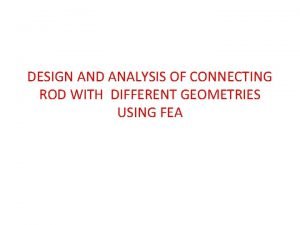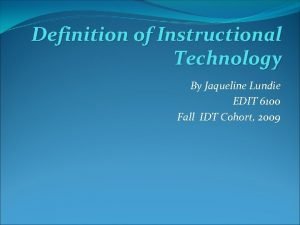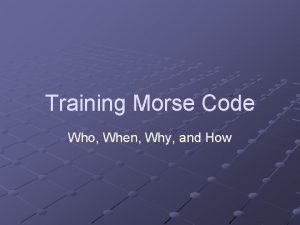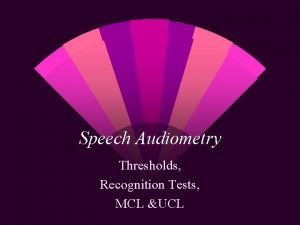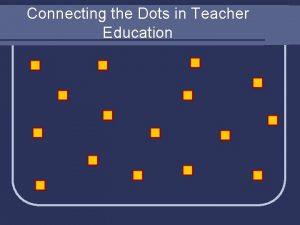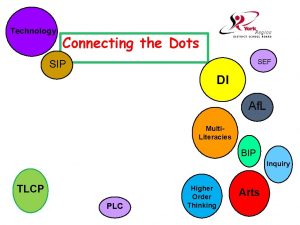Connecting the dots among Instructional design Instructional Technology








- Slides: 8

“Connecting the dots among Instructional design, Instructional Technology & Distance Learning” Instructional Design: Theories, Models and S trategies EDID 6503 The University of the West Indies Open Campus Ria-Maria Narcis

Original Concept Map

New Concept Map

Differences between Concept maps Assignment 1 Consisted of simple definitions in each area. Identified main ideas in large red ovals with ‘timestamps’ and supporting ideas in smaller light green ovals. Indicated common purpose shared by all areas ’enhanced learning’ presented in fluorescent green and common key area, ‘instructional theory’ highlighted in yellow. Assignment 4 Presented a more detailed explanation of three main areas with supporting research. Identified the main areas with large orange hexagons and supporting areas with large quadrilaterals complete with timestamps in a larger font. Addition information in each area is color-coded: ID; green, DL; light pink & IT; sky blue with common purposes highlighted in hot pink.

Four factors that influenced my second Concept Map Ø Desire to demonstrate the learning accomplished during this semester. Ø Clearer illustration of presented ideas to audience. Ø Need to integrate research findings with definitions. Ø Need to identify interconnections among key areas of Instructional Design, Distance Learning and Instructional Technology.

Reflection on knowledge I think that my knowledge and understanding of Instructional Design, Distance Learning and Instructional technology has been greatly developed over this semester. My new concept map demonstrates both my initial understandings and my newly acquired knowledge complimented by research findings and expanded by dissecting the various sub-categories to identify key factors of change and best practices especially in the main area of Instructional Design. I feel a sense of pride and confidence because I created the concept map and empowered that I could explain these complex concepts to my fellow colleagues. In the future, I hope to contribute to the field of instructional design through Trinidad & Tobago’s educational system; I am already thinking about ways to make instructional planning paperless and technology based to incorporate the processes and principles of the field in my country. I look forward to the second semester to continue my ‘ personal construction process’ despite the challenges that I know may lay ahead of me, I am determined to use this newly acquired knowledge, build on it and utilize it as a catalyst for personal and national change and development. Ria-Maria.

References Clark, D. (2010). Instructional design-distance learning. Retrieved from http: //www. nwlink. com/~donclark/hrd/media/distance_learnin g. html Newby, T. J. , Stepich, D. A. , Lehman, J. D. , & Russell, J. D. (2000). Learning, Instruction and Technology. In D. A. Stollenwerk (Ed. ), Instructional Technology for Teaching and Learning Designing Instruction, Integrating Computers, and Using Media (pp. 3 -36). New Jersey: Prentice Hall. Culatta, R. (2013). Instructional design models. Retrieved from http: //www. instructionaldesign. org/models/index. html Demps, E. L. (n. d. ) Capitalizating on the overlap between Reigeluth, C. M. , & Carr-Chellman, A. A. (Eds. ), (2009). Instructional-Design Theories and Models Building a Common Knowledge Base Volume III. New York, N. Y: Routledge. instructional technology and hrd: A potential opportunity. Retrieved from http: //files. eric. ed. gov/fulltext/ED 504562. pdf Negash, S. , Whitman, M. E. Woszczynski, A. B. , & Mattord, H. (2008). Handbook of Distance Learners for Real Time and Asynchromous Information Technology Education. Hershey, N. Y. : IGI Global Morrison, G. R. , Ross, S. M. , & Kemp, J. E. (2004). Introduction to the Instructional Design Process. In B. Hanson & V. A. Vargas (Eds. ), Designing Effective Instruction 4 th Edition (pp. 1 -25). MA: John Wiley & Sons, Inc. Telg, R. W. (2015). Instructional methods in distance education. Retrieved from http: //edis. ifas. ufl. edu/wc 026

Thank You for viewing!
